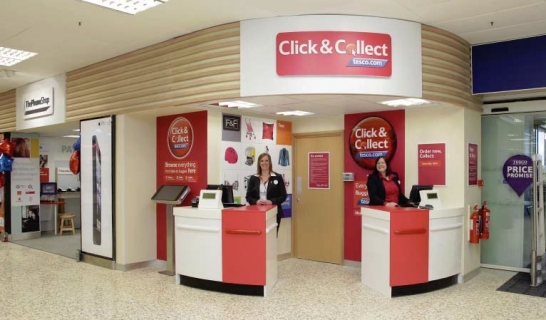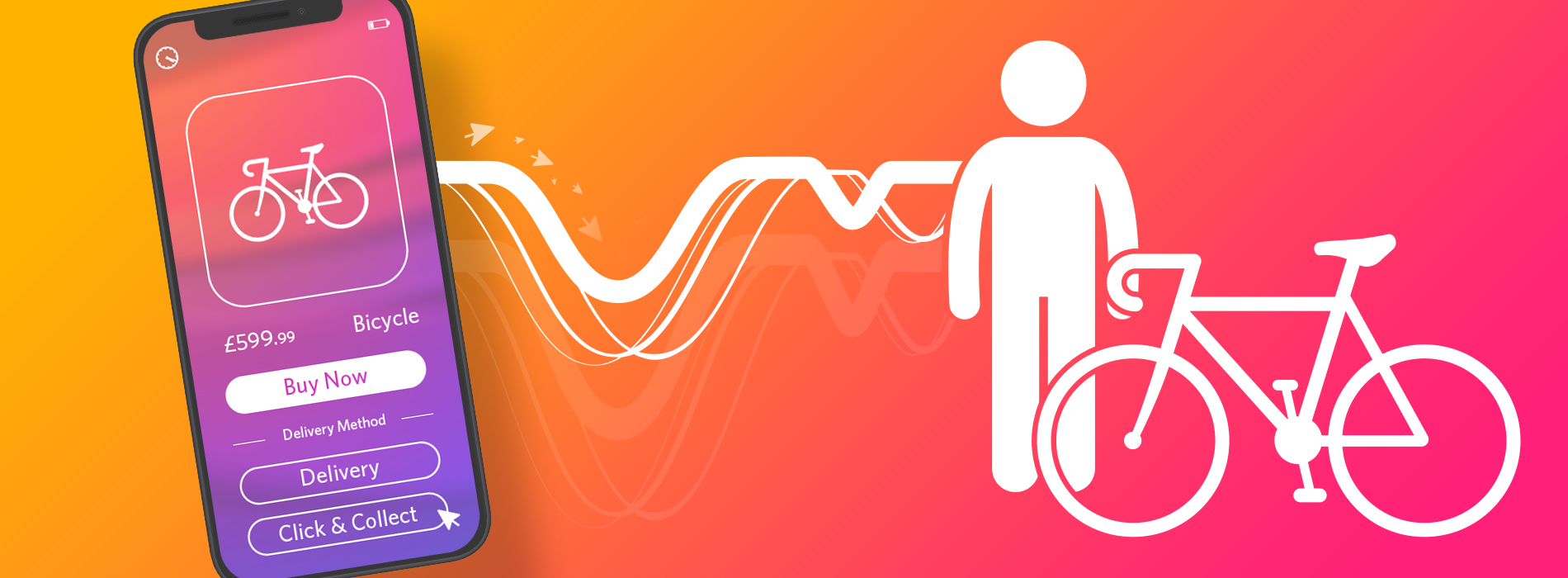We look at what an excellent ecommerce click and collect offering should look like.
Click and collect has grown in popularity over the past few years, and is now offered by the vast majority of established multichannel retailers.
Indeed, Ampersand’s recent Multichannel Retail Report found that 68% of a sample of 187 retailers currently offer click and collect. For some categories, such as fashion, that percentage is higher.


Click and collect was one service that gave multichannel retailers a slight advantage over online-only retailers, though that advantage has been reduced thanks to the introduce of offline collection options like Collect+ where shoppers can collect items at local stores and petrol stations.
Amazon has responded to the challenge by introducing a massive network of lockers which allow customers to collect online orders from convenient locations.


Amazon’s recent acquisition of Whole Foods now gives it an opportunity develop its click and collect service, but for now most multichannel retailers still have some advantage over Amazon, and other online-only retailers.
These include the ability to use in-store inventory to fulfil orders more quickly, and to offer services such as trying out purchases on collection.
What makes a great click and collect service?
These are some of the key features of click and collect services, including those that distinguish the best offerings.
Clear promotion on site
It can be a factor when customers decide to buy so it makes sense to promote the click and collect service.
On Habitat, the availability of click and collect isn’t made clear until the shopping cart page, and it also seems to be unavailable for some products, which is confusing.


Product pages are great places to display this information, as the extra convenience of click and collect can help.
Here, Argos shows collection information on product pages, in this case showing availability at a local store.


Use In-Store Inventory for Speed and Convenience
For some click and collect services, retailers are essentially delivering orders to a local store for pick up. In some cases, the items ordered may be already available in stores
This is useful for customers, but the best services use in-store inventory to provide an improved click and collect offering.
The ability to search local store stock and collect goods quickly is a key differentiator. It’s and advantage for retailers too, as having stock available in-store means orders are cheaper to fulfil.
For example, Schuh manages to make around 50% of click and collect orders available within the hour.
Schuh customers can see stock availability in their local store from product pages, as well as how quickly they can collect orders.


Schuh realises the importance of this choice and convenience, and the prominent promotion of click and collect on the product page reflects this.
Offer Alternatives to In-Store Collection
In-store collection isn’t always convenient, so alternative pick up points help to broaden the click and collect offering.
Lockers like Amazon’s are one way to solve this problem for retailers like Waitrose, which has placed these in locations like railway stations.


Another option is third party click and collect services which allow collection in local retail outlets.


Make it Free
There are, of course, costs associated with offering click and collect, and this is something retailers have to balance with providing a service that customers want to use.
The majority of retailers do offer free click and collect, but there are a few that charge for the service.


For example, John Lewis added a charge of £2 for click and collect orders under £30 as it felt it wasn’t cost-effective.
The costs can be reduced if retailers fulfil orders using in-store stock, but there’s also the advantage of bringing customers into stores, where they may buy additional products.
Make it Mobile
Click and collect needs to work for mobile shoppers, with the added benefit that it’s possible (with fast collection) to appeal to people out shopping.
It needs to work as well on mobile as it does via desktop, as is the case with brands like Superdry.


Smartphone features can also be used to improve the experience for shoppers. For example location data can be used to identify the nearest pick up points and provide directions.


Pay Online or In-Store?
The advantage of paying before collection is that retailers get customers to commit, whereas shoppers reserving items may not turn up for collection.
However, the reserve and collect process is easier, as customers only need to select a location and don’t need to enter payment details at checkout. Therefore more people may convert at this stage.
This is a point to consider for retailers and some, like Schuh, offer both.
Make It Easy to Find Click and Collect Items
This is not for every site perhaps, but if you don’t offer click and collect for every order, then allowing people to find eligible items can help.
Here, B&Q has integrated click and collect into the faceted navigation, allowing customers to view only those items which are available for in-store collection.


Make Store Selection Nice and Easy
Selecting a store or other location to collect from can add complexity to the checkout process, so it’s important to make it as smooth as possible.
In many cases, customers have to search for a store or collection point within checkout, and may only find out about availability and the collection date at this point.
The combination of extra effort required during checkout and the late disclosure of collection points and times increases the risk that customers will abandon a purchase.


One alternative is to have customers select their store, and the option of click and collect, from the product page.


As well as providing this key information before customers enter checkout, it streamlines the payment process.
With the delivery option pre-selected, shoppers just need to add billing address and card details to complete the purchase.


Provide Text Alerts
Text alerts are a useful reminder for customers, and providing the order number means it’s easier to locate it when you arrive at the collection point.


It’s also helpful to remind customers about the things they need to collect the order, photo ID and payment card in this case.
This information should also be made clear on site and in order conformation and reminder emails.
Work on the In-Store Experience
The in-store experience is important for customers, and presents retailers with a chance to impress customers, and to tempt them to purchase accessories or other items while they collect.
Simple things like clearly signposting the locations of collection points in stores helps to improve the experience.


A dedicated collection desk can also help, rather than having customers collect from the customer services counter as is the case with some retailers.


Also, customers should be given the chance to view or try on items if they want to. This can help to reduce returns and enables the store to find a replacement item there and then.
In short, a good in-store experience leaves the customer with a better impression of the brand, and means they’ll be more likely to buy again.
In Summary
Click and collect is now a hygiene factor for many online shoppers, and the best retailers can use this service to differentiate themselves from the competition.
It’s now not just about merely providing the option, but about appealing to customer preferences in areas such as collection speed, convenience and customer experience.
Speak to an expert
Learn how to convert your online audience into revenue with our experts.
Graham Charlton
Graham Charlton is Editor in Chief at SaleCycle. He's been covering ecommerce and digital marketing for more than a decade, having previously written reports and articles for Econsultancy. ClickZ, Search Engine Watch and more.








![Valentine’s Day Ecommerce Tips and Trends [2024 Strategy]](https://www.salecycle.com/wp-content/uploads/2019/01/valentines-ecommerce-1.png)




![How SaleCycle helped Vodafone increase their online sales by an additional 2,000 additional sales per month [Extended Version]](https://www.salecycle.com/wp-content/uploads/2023/08/vodafone-banner.webp)




